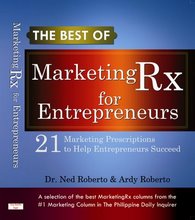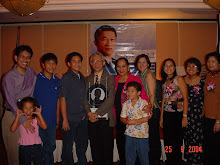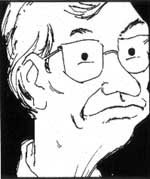How does one go from one restaurant in his neighborhood mall to selling 70% of his company for P3B in seven years selling Ilongo style native grilled chicken?
Two weeks ago, we talked about the finalists of the 2010 Entrepreneur Magazine Entrep10 Awards program. But the entrepreneur whose name is splashed all over the business headlines for the past few days is Edgar Injap Sia III, the founder of the ubiquitous Mang Inasal. The Jr MarketingRx was one of the judges in the 2009 Entreprenuer Magazine Top10 Awards that gave four thumbs up (including the "thumbs" of my feet) to Sia III during the judging process.
Mang Inasal's success would make any entrepreneur green with envy:
- from one store in Robinson's mall in Iloilo in 2003 to 303 stores as of today
- P3.8 billion in sales a year
- sold 70% of his Mang Inasal's holding company (Injap Investments Inc) for P3B to Jollibee Foods Corp.
(he will be paid a P200M deposit and 90% within 30 days of closing of the deal; the rest of the 10% to be paid over the next 3 years)
- Sia III is only 30+ years old!
According to the data and articles that Entrepreneur Magazine gave us judges (we were trying to get a hold of Edgar, our fellow GoNegosyo Angelpreneur and a recent Most Inspiring Young Entrepreneur of Year Awardee, for his comments) here are the 7 secrets, yes, I know, 7 again, to his P3B success:
1. Ready, Fire, Aim! Sia III was presented with an opportunity when a slot at the Robinson's mall in Ioilo was vacant. He reserved the space without knowing what to put up. His gut just told him that there was an opportunity since he saw potential in the space. It was only after a few weeks that he came up with the concept of a Chicken Inasal fast food store. The first fast-food, value for money type of Chicken Inasal restaurant. His approach to expanding to Metro Manila and Luzon was the same: "I was not very familiar with Manila, because I was born and raised in Visayas. I only visited once a year, and it was usually for very short stays. So I knew I was in for quite a challenge taking Mang Inasal to Luzon," Sia III told Entrepreneur magazine.
2. Work your butt off! Sia III worked his butt off day and night. He wasn't afraid of getting his hands literally dirty. Sia III was known to work long hours and help mop and clean up the first store. Then he would come home and help prepare and marinate chicken for the next day. He realized it was going to be lots of work, but he didn't give up. His work ethic and attitude brought him through lots of disappointments and trials.
3. Think Innovation!! Simple Innovation pays dividends. Just don't copy, copy and add something of value. Sia III entered the chicken Inasal scene late. There were established restaurants already. But he simply did the "Positioning" game of Al Ries and Jack Trout and scored a slam dunk. Mang Inasal was the FIRST Chicken Inasal restaurant that would be a fast food type outlet (quick service) with unlimited rice. For P49 a student or office worker could have a filling tasty, grilled chicken meal.
4. Think BIG! Sia III started getting franchise inquiries fast but held off for two years before offering the first franchise. He did the right thing by networking and getting help from the Philippine Franchise Association (PFA) and coming up with a franchise opportunity that was affordable. For about P800,000 start up franchise fee, you could have your own Mang Inasal franchise. (Total investment is about P3M-P4M). After his first franchise offer in 2005, there are now over 300 branches/franchisees.
5. Think Marketing! The marketing message of Mang Inasal remains simple and focused. All you see is a picture of a tasty looking piece of grilled chicken, the name Mang Inasal, (sometimes you see the price: P49) and a bold tagline : "Unlimited Rice!"
6-7. There's more than 5 secrets to Mang Inasal's success. :-)
The story of Edgar Injap Sia III, aka Mr Mang Inasal will surely inspire many entrepreneurs and marketers for years to come. Thank you to Entrepreneur Magazine and GoNegosyo. Get a copy of Entrepreneur Magazine's December 2010 issue featuring the Top10 Entrepreneurs of the Philippines.
WE welcome your comments and questions. Send them to us at MarketingRx@pldtDSL.net or DrNedmarketingrx@gmail.com. God bless!









